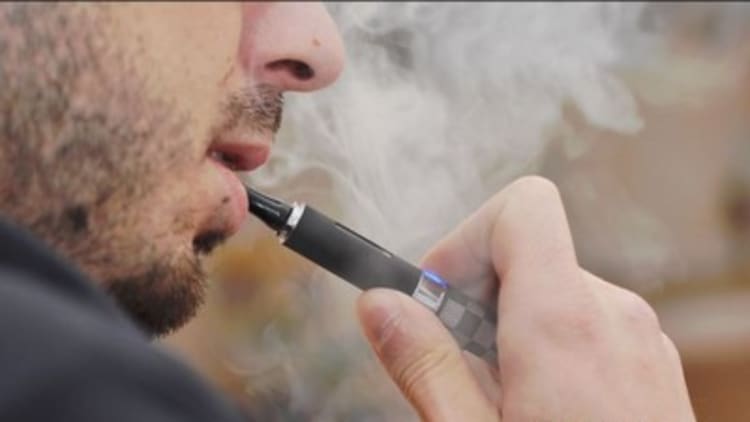
This past year was all about the "vape." But the trend in which smokers inhale vapor from tobacco, marijuana and other nontobacco-based liquids is gaining even more followers among smokers and nonsmokers.
This year, the retail vaping industry is forecast to reach $3.5 billion, more than twice the $1.7 billion estimate for 2013, according to Bonnie Herzog, Wells Fargo Securities' senior tobacco and beverage analyst.
And even though regulatory hurdles remain, curious consumers are pushing vaping's growth.
Vaping involves inhaling water vapor through a personal vaporizer or electronic cigarette. When users draw on the device, its battery heats the liquid, which is then atomized into an inhalable vapor.
E-cigarettes differ from traditional cigarettes in that there's no secondhand smoke associated with vaping. Users of nicotine and flavored liquids do not get high from consuming such vaporized liquids. However, vaping marijuana-infused liquids will get users high.
Alexandra Kapitanskaya, based in Washington, D.C, turned to vaping to kick her nicotine habit. She's no longer a half-pack-a-day smoker, but she still turns to vaping as a hobby.
"I thought it would be a more healthful alternative to smoking and it was a better bet," she said. "I am bringing more and more friends into it. We get together, have a glass of wine—it's fun. It doesn't smell and it doesn't make you cough."
And she said it's saving her money. Although e-cigs and vaporizers can run anywhere from $50 to $200 each, the liquids she vapes only run her about $15 a month.
Part of the appeal to smokers and nonsmokers is plain-old curiosity, said Greg Conley, president of the American Vaping Association, an advocacy group. "There's more consumer awareness around vaping products, and the technology has so vastly improved in the past five years," Conley said.
Others like Erik Miller, owner of Vape Joint, a vape shop in Washington, D.C., sees the industry growing thanks to the social aspect it provides users. Consumers start to quit smoking but continue to vape as a hobby. His shop hosts local movie nights and book signings, where users come to vape and socialize.
The only thing standing in the way for small businesses specializing in vaporizers and vape liquids are pending regulations from the Food and Drug Administration, which has regulatory authority over cigarettes, cigarette tobacco, smokeless tobacco and roll-your-own tobacco.
Under proposed federal regulations, retailers of vape liquids and some new models of e-cigarette products would be required to go through the application and approval process—which those retailers are currently not subject to. Some makers of vape liquids, which include small mom-and-pops, say they would not be able to afford doing so.
The inability to sell a big variety of vaping liquids also would have a big impact on small vape shops that rely on independent makers for inventory, much in the way some local bars feature small craft beers.
Other larger makers of e-cigarettes would be less impacted by costs associated with a federal testing and approval process.
The FDA does not currently regulate electronic cigarettes, except for e-cigarettes that are marketed for therapeutic purposes. (No electronic cigarettes have been approved for therapeutic purposes.)
Under the Family Smoking Prevention and Tobacco Control Act of 2009, the agency can "deem" additional products be subject to the Federal Food, Drug and Cosmetic Act, according to Jennifer Haliski, an FDA press officer.
The public comment period on this rule closed in August, and the FDA will not speculate when a final rule will be written.


